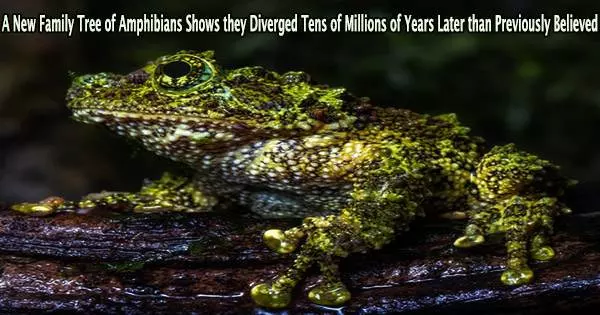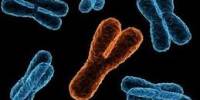The Natural History Museum in London’s Senior Curator in Charge of Amphibians and Reptiles, Jeff Streicher, and other researchers have revealed the most comprehensive evolutionary tree of frogs (anuran amphibians) to date. This thorough phylogeny, based on an astounding 5,242 frog species and hundreds of genetic markers, is going to revolutionize our understanding of these intriguing critters.
The study, “Frog phylogeny: a time-calibrated, species-level tree based on hundreds of loci and 5,242 species,” is published in Molecular Phylogenetics and Evolution.
The new research has also shifted the possible start date for when living frogs began evolving. According to Jeff Streicher, a lead author on the paper, “Previously the group was thought to have begun to split into the thousands of species we see today around 210 or 220 million years ago. Our new analysis suggests instead that this date was around 180 million years ago. Finding that frogs are younger means that they diversified into thousands of species more rapidly than was thought before.”
Because of their unique natural histories, frogs have always fascinated both biologists and nature lovers. The types of genomic data that were utilized in earlier attempts to construct thorough phylogenies for these species, however, posed limitations.
In this study, these limitations were overcome by building a large family tree that combined genetic information from phylogenomic studies with hundreds of genetic markers that included only a few species and information from thousands of small-scale frog studies, some of which used only one or two markers. This novel approach allowed them to include an astonishing 5,242 frog species, representing a remarkable 71% increase from previous family trees.
Previous studies were afraid to combine phylogenomic datasets with hundreds of markers with data from many smaller studies with fewer markers. We showed that this is not only possible, but also leads to an improved family-level tree that can include thousands of species. This same approach could be applied to any group of organisms.
Professor John J. Wiens
Jeff Streicher says, “Phylogenetic trees are the starting point for most studies looking at a specific group of animals, so it is essential they are as accurate and detailed as possible.”
Dan Portik, lead author adds, “Here not only have we increased the data that the frog phylogenetic tree draws upon but we also developed new software to help improve those data.”
To make it simpler to compare genes that evolve significantly differently between species, the researchers created software.
John J. Wiens, the senior author and a Professor at the University of Arizona says, “Previous studies were afraid to combine phylogenomic datasets with hundreds of markers with data from many smaller studies with fewer markers. We showed that this is not only possible, but also leads to an improved family-level tree that can include thousands of species. This same approach could be applied to any group of organisms.”
The work gives new opportunities for the study of anuran amphibians and marks a substantial advance in our understanding of frog evolution. It also serves as a great resource for scholars. This extensive phylogeny provides a solid platform for further research as the scientific community works to study and learn more about these amazing species.
















